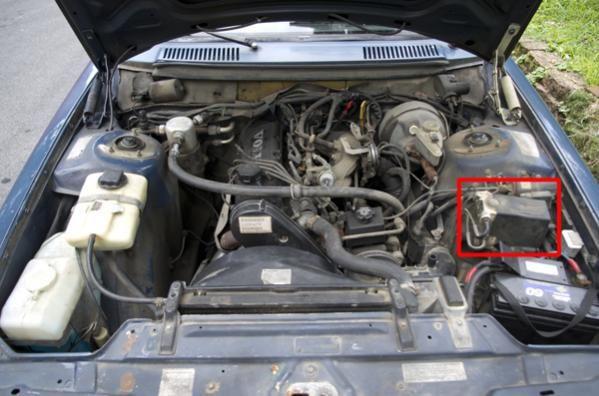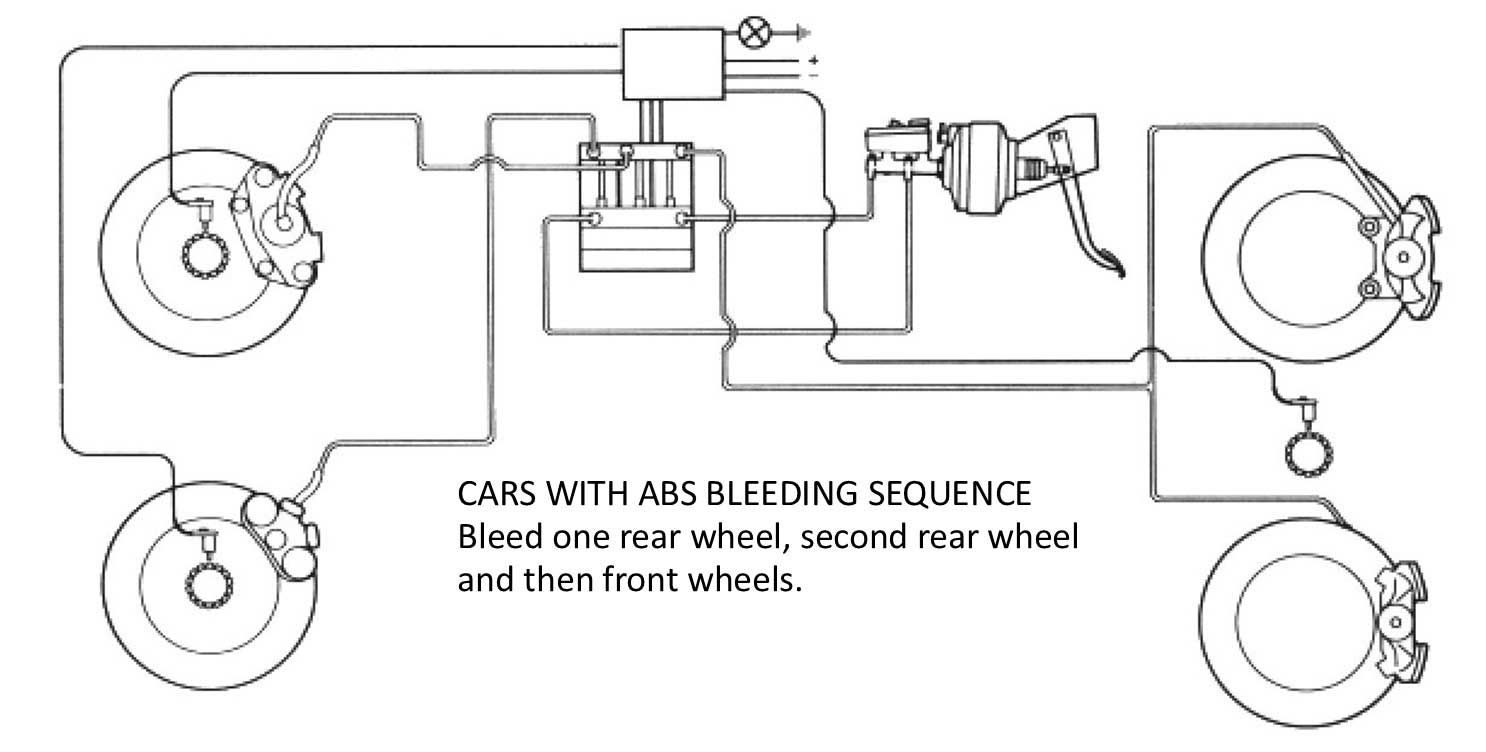|
If you have ABS there will be an 'ABS' dash bulb when the key is turned on and under the hood there will be a medium sized black box with an aluminum base and a bunch of brake lines connected, also normally says ABS on the top.
Your mechanic should have automatically known to bleed the line(s) if he disconnected a line, also not to let a line drip open during a lengthy service and let the reservoir get too low. I would question his competence if he didn't.
The master cylinder has two separate brake fluid circuits using a common fluid reservoir. Tell your mechanic you want a power bleed (vacuum bleed, eg. MityVac) or pressure bleed) and not a pedal bleed (risking master cyl seal damage when the pedal gets closer to the floor than normal travel). In the non-ABS version, tell your mechanic Volvo uses a triangular dual brake circuit with a pressure sensing balance switch in the junction box to sense a brake failure. The triangles are two front brakes (either both lower or both upper pistons) with one of the rear brakes. For ABS there are no bleeders on the ABS unit and air can sometimes get trapped, such as after the reservoir running dry. The ABS should be cycled, either electrically (the LH OBD unfortunately has no function to do this) or by triggering the ABS slamming on your brakes (best done on gravel as opposed to finding a slippery surface).
Bleeding order isn't critical unless there's air in the system, such as your case. The bleed sequence may vary slightly in books. The rule to minimize air bubbles is to bleed the longest lines first, so rears first (often listed as right rear, then left rear), then the right front brake opposite the master, then the left last. If a line has been removed from the master cylinder or if it ran dry of fluid then begin with a master cylinder bleed just to be safe.
For your added education, soft brakes are (more or less in order) air in the line, air in the caliper, air in the ABS, air in the junction block, weak/failed rubber brake hoses, too soft or too hard brake pads, worn thin pads, and especially a combination of those. Air bubbles trapped in the calipers can be caused by opening the bleeders too far, especially when using the pedal method, or not closing the bleeders while fluid is still being pushed out, also aggravated by bleeding too slowly (air bubbles aren't as easily pushed over humps in the line). After a caliper replacement tap the caliper hard with a hammer to get any clinging bubbles to move to the top and consider a pre-bleed with the calipers off, held high so there's no air trap in the hose and the bleeders also high. If the master cylinder is replaced it should be bench bled first (see online for how to do this making up your own bleed tubes). If soft brakes persist then re-bleed a little off each caliper. Purists might try to raise the end of the car on the bleeder side of the caliper. When all else fails re-bleed the whole system starting with the master cyl.
--
Dave -still with 940's, prev 740/240/140/120 You'd think I'd have learned by now
|





